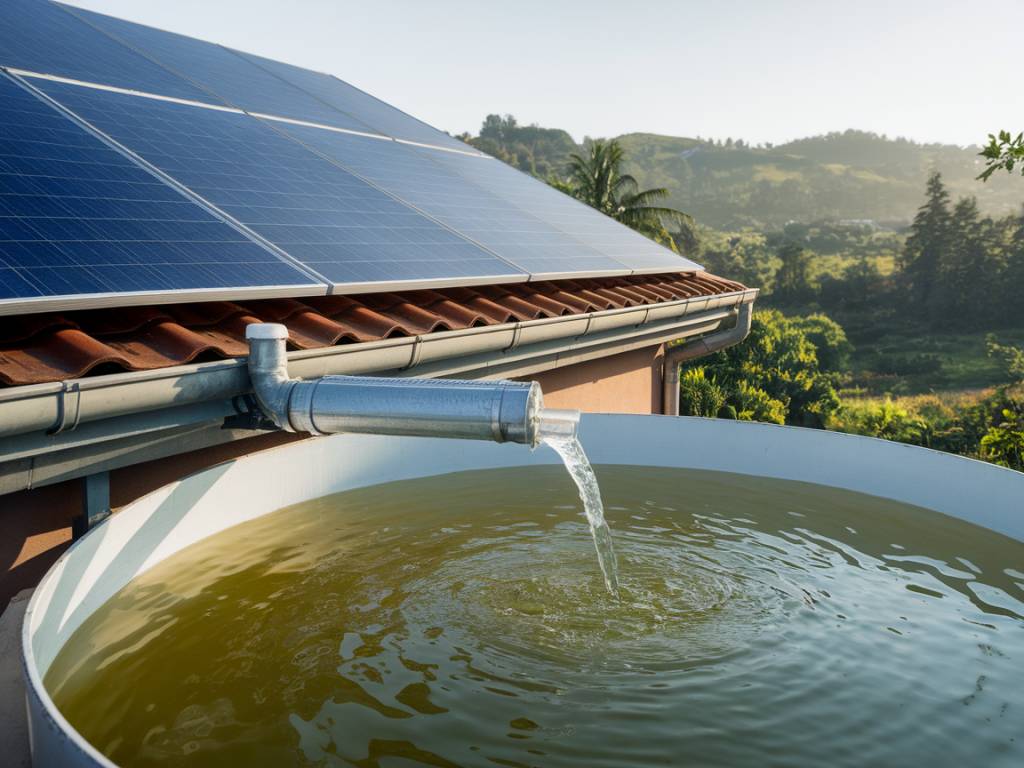The connection between renewable energy and water conservation is often overlooked, yet it is one of the most crucial relationships in the quest for a sustainable future. When we talk about solar panels, wind turbines, or bioenergy, what frequently comes to mind are reduced carbon footprints and cleaner air. But what if I told you that these technologies also have a significant role to play in conserving one of our planet’s most precious resources—water? Let’s dive deeper into this connection and explore how renewable energy is making a subtle, yet profound, impact on water conservation around the world.
Why Water Matters in Energy Production
Water is the lifeblood of our planet, but its importance extends far beyond drinking and agriculture. It’s also a critical component of traditional energy production systems. Fossil fuel power plants, for instance, rely heavily on water for cooling processes. In fact, thermoelectric power plants are the second-largest consumers of freshwater globally, right behind agriculture.
Coal, natural gas, and nuclear plants use millions of gallons of water daily for cooling purposes and steam generation. This not only depletes local water sources but also results in thermal pollution—when hot water is released back into rivers and lakes, disrupting aquatic ecosystems. The impact? Significant strain on freshwater supplies and harm to biodiversity. So, where do renewables come in?
How Renewable Energy Saves Water
Renewable energy technologies offer a breath of fresh air—and a splash of fresh water—for the planet. Unlike fossil fuel power plants, solar, wind, and other renewable systems require minimal water for operation. Here’s a closer look:
- Solar Power: Photovoltaic (PV) solar panels generate electricity without any water use. While manufacturing solar panels requires some water, the operational phase is essentially water-free.
- Wind Power: Wind turbines are another water-conserving powerhouse. These towering giants produce electricity simply by harnessing the power of the wind—no steam, no cooling, no water.
- Geothermal Energy: Even though geothermal plants require water, modern closed-loop systems recycle nearly all of it, drastically reducing overall consumption.
This stark contrast highlights how transitioning to renewables could relieve enormous pressure on global water resources.
Water Use Across Energy Lifecycles
It’s essential to look at the broader picture of energy production, including the entire lifecycle—extraction, processing, and operation. Fossil fuels are water-intensive from start to finish. Think about coal mining, oil drilling, and fracking, all of which require massive amounts of water and generate copious waste.
Contrast this with renewables. While water might be needed during manufacturing or for cleaning solar panels and thermal solar systems, the long-term operational savings far outweigh the initial usage. The reduced water footprint during the operational phase makes clean energy a smarter choice, not just for reducing emissions but also for protecting global water supplies.
Real-World Examples of Renewables and Water Conservation
Still wondering how this plays out in reality? Let’s look at two compelling examples:
- California and Solar Farms: Amid recurring droughts, California has leaned heavily on solar energy. Solar farms in the state not only reduce greenhouse gas emissions but also help conserve millions of gallons of water annually that would otherwise be used in coal or natural gas plants.
- Wind Energy in Texas: Texas, a leader in wind power, has significantly reduced its dependence on water-intensive fossil fuels. By prioritizing wind, the state is safeguarding water supplies for its growing population and agricultural needs.
Energy-Water Nexus and Climate Resilience
The relationship between energy and water is increasingly recognized as a key element of climate resilience. As climate change exacerbates water scarcity, the importance of renewable energy becomes even more pronounced. By reducing water use, renewable energy systems free up essential resources for agriculture, drinking water, and ecosystem preservation.
Moreover, decentralized renewable energy systems like rooftop solar and microgrids offer additional resilience by reducing the need for extensive water-reliant infrastructure. If the power grid goes down due to drought or extreme weather, local renewables ensure communities remain operational and self-sufficient.
Breaking Down the Barriers
Despite the clear benefits, many regions still struggle to adopt renewables at scale. One barrier is the lack of awareness about the water-saving advantages of clean energy. Policy changes, educational campaigns, and incentives could bridge this gap, encouraging both governments and individuals to prioritize renewables not just for the climate, but for water conservation too.
Technological innovation is also playing a part. For example, researchers are developing waterless cleaning technologies for solar panels in arid regions, further minimizing water use. Similarly, floating solar farms are being deployed on reservoirs, reducing evaporation while generating clean energy.
Your Role in the Energy-Water Equation
You might think, “This all sounds great, but what can I do?” Fortunately, there are many ways you can contribute to this transformation:
- Install solar panels on your rooftop to reduce reliance on water-heavy energy systems.
- Advocate for community wind or solar projects to bring renewable energy benefits to your local area.
- Support policy initiatives aimed at increasing renewable energy adoption and water conservation.
Each step may seem small, but collective action can drive meaningful change.
A Win-Win for Energy and Water
The synergy between renewable energy and water conservation is a compelling reminder that environmental challenges are interconnected—and so are the solutions. By transitioning to renewables, we aren’t just lowering emissions. We’re also safeguarding the planet’s water resources, protecting ecosystems, and building resilience against climate change.
So, the next time someone asks, “Why invest in renewables?” remind them that it’s not just about cleaner air—it’s about preserving the very essence of life itself: water.






More Stories
Powering Data Centers Sustainably: The Role of Renewable Energy in the Digital Age
Integrating Biophilic Design with Green Technology: A New Paradigm for Sustainable Living
How virtual reality is transforming modern manufacturing processes